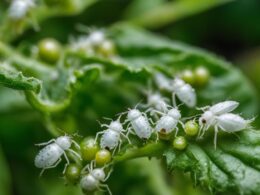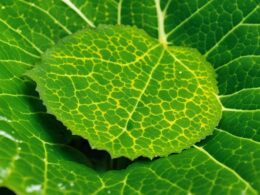If you’re frustrated by straw-colored or brown patches on your lawn, you may be dealing with a lawn fungus in your St. Augustine grass. In this section, we’ll explore effective tips for treating and controlling lawn fungus in St. Augustine grass. We’ll cover common fungi such as take-all root rot, brown patch, and grey leaf spot, and discuss treatments and preventive measures to restore your lawn’s health and lushness.
Revive your lawn’s health and lushness with expert tips on St. Augustine grass fungus treatment and lawn fungus control. Say goodbye to those unsightly brown patches and restore the vibrancy of your lawn. Let’s dive in and discover effective measures to combat lawn fungus and revive your lawn’s beauty.
What is St. Augustine Fungus?
St. Augustine fungus refers to several common fungi that can affect St. Augustine grass, including take-all root rot, brown patch, and grey leaf spot. Take-all root rot can affect both St. Augustine and Bermuda grass, causing circular patches of brown, dead-looking grass. On the other hand, brown patch typically occurs in the fall and is characterized by circular or irregularly shaped brown patches in the lawn. Grey leaf spot is identified by oblong, grey-to-ash-brown lesions on the grass blades. Understanding these fungal diseases is crucial for effective treatment and prevention.
Fungus in St. Augustine Grass Causes
When it comes to dealing with fungus in St. Augustine grass, understanding the causes is crucial for effective treatment and prevention. Several factors can contribute to the development of fungus in your lawn.
Over-Watering
Over-watering your lawn, especially certain areas, can create the ideal environment for lawn fungus to thrive. Excessive moisture leads to increased humidity, which favors fungal growth. It is essential to water your St. Augustine grass correctly to prevent the formation of fungal infections.
Temperature Changes
Temperature changes, especially during the spring season, can make St. Augustine grass susceptible to fungal infections. The fluctuating temperatures create stress on the grass, weakening its natural defenses against diseases. Rapid temperature fluctuations, especially in areas with high humidity, can create an environment conducive to fungal growth.
Neighboring Lawn Infection
Fungal diseases can spread from infected neighboring lawns to your St. Augustine grass. Spores from the fungus can be carried by wind, animals, or even through the movement of gardening equipment. If your neighbor’s lawn has a fungal disease, there is a risk of contamination, putting your lawn at risk as well.
Being aware of these causes can help you take preventive measures to protect your St. Augustine grass from fungal infections. By addressing these factors, you can maintain a healthy and thriving lawn.
St. Augustine Grass Fungus Treatment
When it comes to treating St. Augustine grass fungus, there are several effective strategies you can employ. One important aspect is adopting smart watering habits, ensuring that you don’t over-water your lawn and create conditions favorable for fungus growth. Over-watering can lead to excessive moisture, which creates a breeding ground for fungal infections. Instead, practice smart watering by irrigating your lawn deeply and infrequently, allowing the soil to dry out slightly between watering sessions. This helps prevent stagnant water and reduces the risk of fungal growth.
Another key treatment method for St. Augustine grass fungus is the use of fungicides. Fungicides are specially formulated products that help suppress and control lawn fungus. When applying fungicides, it’s important to follow the instructions provided by the manufacturer and apply the product at the recommended rate. Be sure to target the affected areas and any surrounding regions at risk of fungal infection.
To optimize the health and growth of your St. Augustine grass, it’s crucial to practice consistent and proper lawn care habits. Regularly mowing your lawn to the correct height, typically around 3 to 4 inches, helps promote air circulation and reduces moisture retention, minimizing fungal growth. Additionally, removing thatch, ensuring proper soil drainage, and avoiding excessive nitrogen fertilization can further aid in preventing fungal infections.
Aside from treatment methods, it’s important to implement preventive measures to minimize the risk of St. Augustine grass fungus. One effective approach is practicing smart watering, as mentioned earlier. Additionally, reducing shade and improving sunlight exposure in your lawn can help inhibit fungal growth. Trimming overhanging branches and thinning out dense vegetation can create a more open and airflow-friendly environment for your lawn.
Remember, each lawn is unique, and the best approach may vary depending on the specific circumstances. Consulting with a professional lawn care expert can provide personalized recommendations tailored to your lawn’s needs. By adopting effective treatment methods, implementing smart watering habits, and practicing proper lawn care, you can significantly reduce the risk of St. Augustine grass fungus and enjoy a healthy, vibrant lawn.
Common Lawn Fungal Diseases and Their Treatments
St. Augustine grass is susceptible to various fungal diseases, each presenting its own set of symptoms and requiring specific treatment methods. In this section, we will explore the most common lawn fungal diseases, including brown patch, take-all root rot, fairy ring, nigrospora stolon rot, gray leaf spot, and St. Augustine decline. Understanding the causes, recognizing the symptoms, and implementing appropriate treatments for each disease is crucial in effectively combating these infections and restoring the health of your lawn.
Brown Patch
Brown patch is a prevalent fungal disease that manifests as circular patches of brown or tan grass, with a darker outer ring. It thrives in humid conditions and spreads rapidly during warm, wet weather. To treat brown patch, ensure proper lawn maintenance with smart watering practices, such as morning irrigation and avoiding over-watering. Aeration, regular mowing, and the application of fungicides specifically formulated for brown patch can also help control and prevent its recurrence.
Take-All Root Rot
Take-all root rot affects both St. Augustine and Bermuda grasses and is commonly characterized by circular areas of thin or dead-looking grass. It is caused by a fungus that attacks the grass’s root system, resulting in stunted growth and overall decline. Treatment involves improving soil drainage, reducing over-watering, and applying fungicides designed to counteract the root rot fungus. Additionally, adjusting lawn care practices, such as overseeding with disease-resistant varieties, can help prevent future infections.
Fairy Ring
Fairy ring is a fungal disease that forms distinctive rings or arcs on the lawn. It is caused by underground mycelium growth, which affects the grass’s root system. The appearance of mushrooms or toadstools is often observed in and around the ring. While controlling fairy ring can be challenging, treatments include removing the affected soil, aerating the lawn, and applying fungicides. Enhancing soil health and implementing proper watering practices can also help prevent the spread and recurrence of fairy ring.
Nigrospora Stolon Rot
Nigrospora stolon rot is a fungal disease that primarily affects the stolons (above-ground runners) of St. Augustine grass. It causes dark brown or black lesions on the stolons, leading to weakened growth and patchy areas in the lawn. To treat this disease, remove and destroy the affected runners, improve drainage in the affected area, and apply appropriate fungicides. Regular fertilization and maintaining proper lawn care practices can help minimize the risk of nigrospora stolon rot.
Gray Leaf Spot
Gray leaf spot is a fungal disease characterized by oblong, gray-to-ash-brown lesions on the grass blades. It typically occurs during hot, humid weather and can cause severe damage to St. Augustine grass. Treatment involves proper lawn maintenance, including regular mowing to prevent excessive leaf moisture, proper irrigation techniques, and the application of fungicides specifically formulated for gray leaf spot. Promoting good airflow and avoiding excess nitrogen fertilizer can also aid in preventing its occurrence.
St. Augustine Decline
St. Augustine decline is a complex fungal disease that affects St. Augustine grass, resulting in the rapid decline of the lawn’s health and vigor. It is caused by a combination of fungal pathogens, including chinch bugs and nematodes. To treat St. Augustine decline, it is essential to identify and control the underlying causes, such as managing insect infestations and improving soil health. A comprehensive lawn care plan that incorporates proper mowing, irrigation, and fertilization practices is vital to rejuvenate the lawn and prevent further decline.
Can the Treatment Tips for Fairy Ring in St. Augustine Grass be Applied to Other Lawn Fungus Issues?
Yes, some lawn treatment tips for fairy ring can be applied to other lawn fungus issues. For example, improving soil drainage and reducing thatch buildup can help prevent various types of lawn fungi. Additionally, the use of fungicides and proper watering techniques can also be effective against different types of lawn fungus.
Conclusion
Dealing with fungus in your St. Augustine grass can be frustrating, but with the right treatment and prevention strategies, you can restore your lawn’s health and lushness. By understanding the causes of lawn fungus, implementing smart watering practices, and utilizing fungicide treatments, you can effectively control and prevent fungal infections. Remember, maintaining a healthy lawn requires ongoing care and attention. With these effective tips and techniques, you’ll be well-equipped to combat St. Augustine grass fungus and enjoy a beautiful, vibrant lawn.











